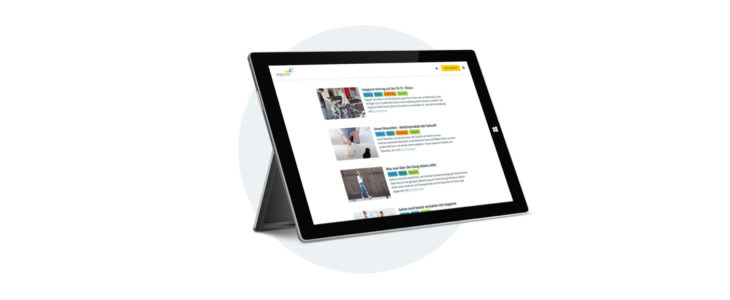Better follow-up treatment of tibial plateau fractures with stapp one

A tibial plateau fracture is a bone fracture at the upper end of the tibia (shinbone). They are classified into fractures of the plateau, luxation fractures and comminuted fractures.¹ As the various names already indicate, a fracture of the tibial plateau can present diverse injury patterns. Regardless of whether a conservative treatment method or surgery is chosen, therapy using partial weight-bearing is indispensable in rehabilitative aftercare. For this purpose, stapp one is the optimal medical product.
In general, tibial plateau fractures are rare injuries. In sports, however, the incidence is significantly higher. Instead of 1% it is about 5-10%. ² As far as the classification of treatment and surgical strategies are concerned, significant progress has been made in recent years.³ Apart from surgical interventions or conservative treatments, the rehabilitation phase is crucial to achieve normal ROM (“range of motion”). Especially to also prevent a possible ankylosis.4
Follow-up treatment with partial weight bearing
According to Prim. Priv.-Doz. Dr. René El Attal (2018), postoperative management depends on the impairment of the soft tissue and the complexity of the fracture or the load and exercise stability achieved. For simple as well as complex fractures, the doctor recommends rehabilitative training with partial weight-bearing slowly increasing the weight every week to finally achieve full weight-bearing.
Depending on the stage of rehabilitation, the patients should not exceed a set load limit. For simpler fractures without relevant concomitant injuries, for example, this limit could start at 15 kg.5
However, this raises the question of whether patients know what a partial weight-bearing of 15 kg feels like. Especially after injuries or surgery, it is difficult to restore the right perception of one’s body. Furthermore, for the physiotherapist’s naked eye it is almost impossible to determine whether the patient is moving within the specified load range or not. Exactly for problems like this the medical device from stapp one is the perfect solution.
Easily check and comply with load limits
The intelligent sensor sole from stapp one is the innovation for follow-up treatments of tibial plateau fractures. The soles are inserted into the patient’s shoes and measure the foot pressure load and the body’s center of gravity. The correspondent medical software provides a visual, acoustic and/or haptic live-biofeedback on a tablet or computer.
Therapists have the possibility to check and correct the pressure load of their patients if necessary. The load limit can be easily set and therefore ensures an optimal therapy setting based on objective data. Using live biofeedback, the patient and therapist are either informed by haptic, visual or acoustic signal when the limit has been exceeded or not reached. This data can also be recorded and compared with data from later sessions to make progress objectively visible.
A playful approach that motivates
stapp one not only helps therapists to give their patient’s a more effective and comprehensive treatment, but also has a considerable added value for patients with tibial plateau fractures. stapp one’s user-friendly and intuitive software allows patients to check themselves during training. This in turn increases motivation, as patients can playfully find the right load range feeling and seeing the differences themselves. Patients experience not only a noticeable but also an objectively visible change, which gives them confidence and strengthens their belief in their own abilities.6
Would you like to learn more about stapp one or do you have any questions? Please contact us! We are always at your disposal.
Find us on LinkedIn and become part of our community! We keep you updated about stapp one, medicine and technology!
¹ Petersen, W., Zantop, T. & Raschke, M. Tibiakopffraktur. Unfallchirurg 109, 219–234 (2006).
² Billert, T., Kaiser, H. & Schmidmaier, G. Rehabilitationsprogramme nach Tibiakopffrakturen. Trauma Berufskrankh 11, 289–292 (2009).
³ El Attal, René. Tibiakopffrakturen – moderne Klassifikationen und operative Strategie. 2018.
4 Billert, T., Kaiser, H. & Schmidmaier, G. Rehabilitationsprogramme nach Tibiakopffrakturen. Trauma Berufskrankh 11, 289–292 (2009).
5 El Attal, René. Tibiakopffrakturen – moderne Klassifikationen und operative Strategie. 2018.
6 Johannes S, Hellweg S. Motivation als Grundlage für den Therapieerfolg. neuroreha 2010; 2: 70–78
https://pubmed.ncbi.nlm.nih.gov/16523282/
https://link.springer.com/article/10.1007/s10039-009-1537-7#citeas
https://www.physiosalzburg.at/doc/Motivation%20als%20Grundlage%20für%20Therapieerfolg.pdf

